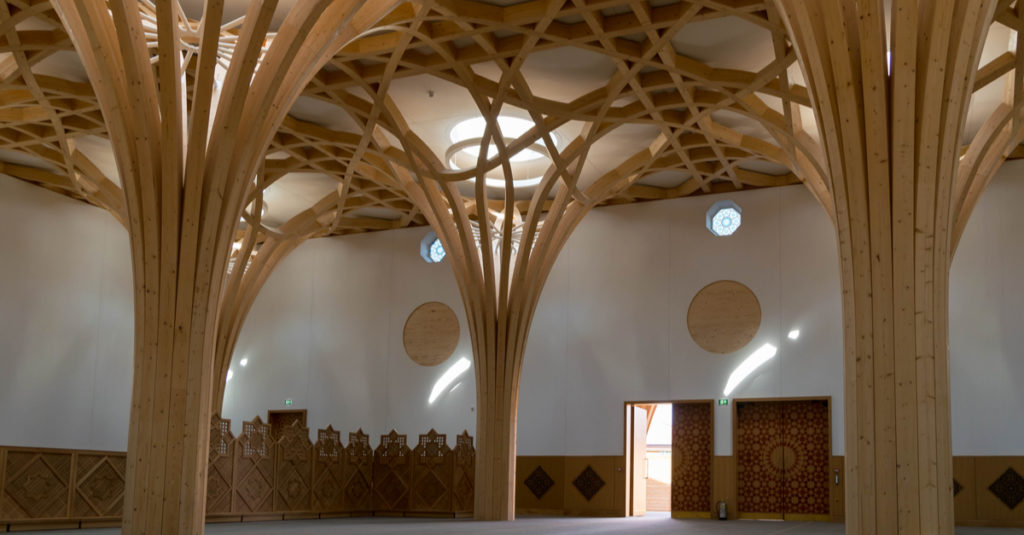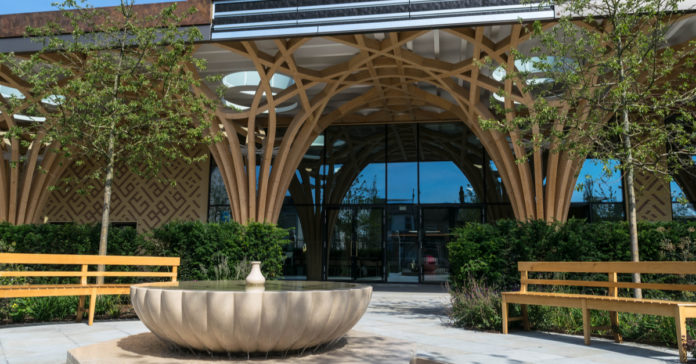Despite being the favourite to win, Cambridge Mosque has narrowly missed out in a competition to be named Britain’s best new building.
The RIBA (Royal Institute of British Architects) Stirling Prize is the UK’s most prestigious architecture prize. Cambridge Mosque made the final six candidates and won the People’s Vote and Client of the Year prize.
However, the overall top prize went to Kingston University London’s student Town House.
The design of Cambridge Mosque, which opened in 2019, was inspired both by Islamic and English religious architectural traditions.
In 2009, Marks Barfield Architects won the competition to design the building with their concept of the mosque as a calm oasis within a grove of trees.
With the collaboration of UK-based specialists such as the geometer Keith Critchlow, garden designer Emma Clark, and artists Amber Khokhar and Ayesha Gamiet, among others, the final design marries traditional Islamic architecture, geometry and horticulture with indigenous English materials, plants and craftsmanship.
The defining feature of Cambridge Mosque is its timber structure. The columns reach up to support the roof in an interlaced octagonal lattice vault structure evocative of English gothic fan vaulting. Roof lights are located above the timber trees, bathing the prayer hall in light.
Subscribe to our newsletter and stay updated on the latest news and updates from around the Muslim world!

Worshippers and visitors enter via an Islamic garden before passing through a covered portico and then an atrium, preparing them gradually for the contemplation of the prayer hall.
When it was shortlisted as a finalist RIBA said about Cambridge Mosque: “The urban intervention of inserting a mosque capable of welcoming 1,000 worshipers within a low rise, residential neighbourhood, without dominating it, is masterful.
“Its presence is clear but modest, considering the size of the mosque relative to the two storey terrace houses around it. This is achieved by setting it back from the street, progressing through the Islamic garden, then gradually increasing in scale to the front portico, atrium with cafe to one side and study centre to the other, through to central ablution areas. The building then rises at the rear to the largest mass of the prayer hall, which shifts in geometry to face Mecca.”
RIBA added: “Social and environmental sustainability were central to the competition-winning scheme and have been delivered. The intent was to produce a building in accordance with the spiritual belief that humanity’s role is as a responsible custodian of nature, meaning, one should minimise their carbon footprint.
“The building has achieved net zero carbon energy on site in use. The competing elements of the demand for car parking to suit large events with elderly congregations, creating an underground car park and the environmental consequences of embodied carbon, have been recognised.”




















